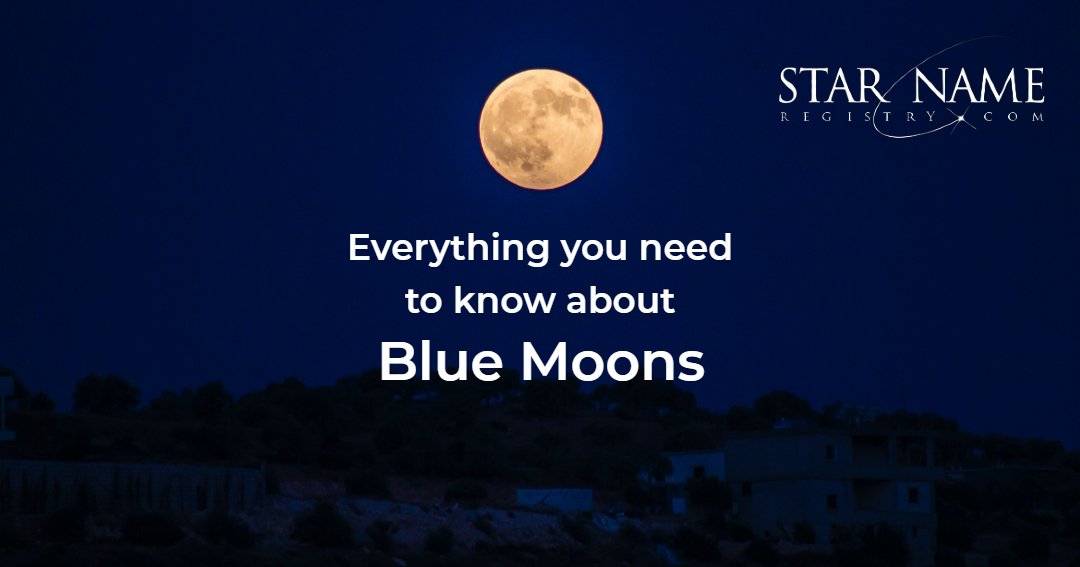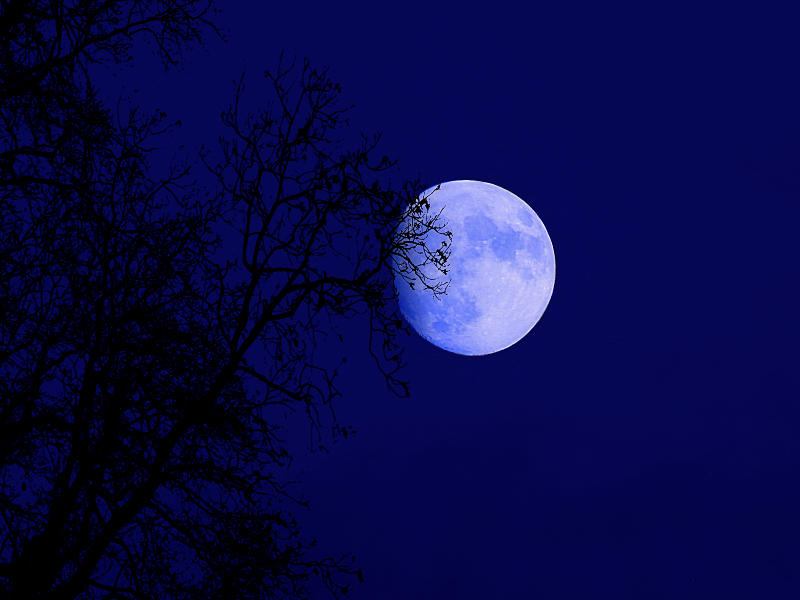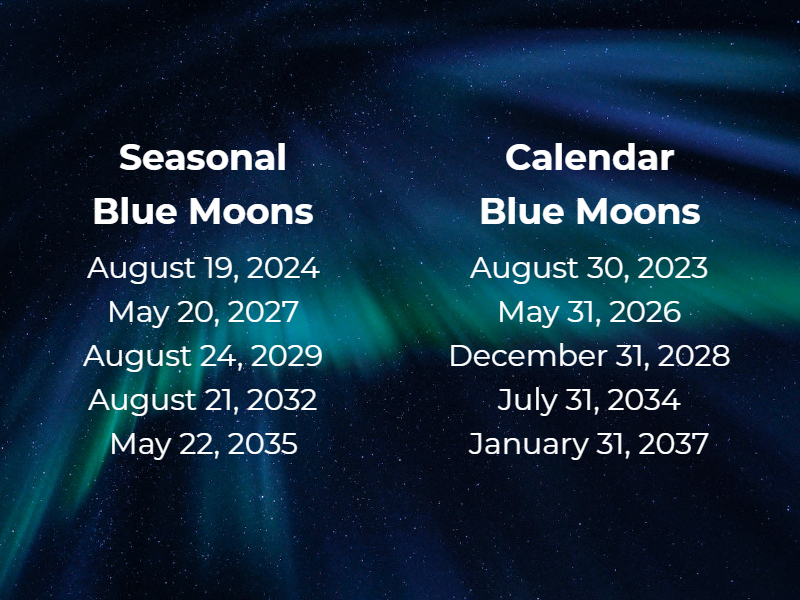
Get ready to treat yourself to an astronomical wonder that promises to captivate skywatchers and stargazers alike – the August 2023 Blue Supermoon is just around the corner, bringing a spectacular celestial show to the night sky!
The term “blue moon” might make you imagine a sapphire-coloured moon, but the reality is quite different. The blue moon doesn’t really look blue but rather it has two meanings. Traditionally, if there are four full moons in a season, the third of these moons will be considered a seasonal blue moon. However, in modern times, it refers to the second of two full moons that occur in the same month (a calendar blue moon).
Neither of these occur very often, which is why the phrase “once in a blue moon” means that something rarely happens and why blue moons are super special!

Despite its name, blue moons still retain the classic, silvery-white shade we see most nights. The blue moon gets it name from a centuries-old expression, “the Moon is blue”, meaning that something is impossible. However, its meaning changed in 1883 when a volcano in Indonesia erupted and its ash appeared to change the colour of the sky, making the Moon look like it was blue! The phrase therefore changed to mean something that is rare, rather than impossible.
This year, the blue moon has an extra special quality – it’ll be a supermoon as well! This occurs when the Moon’s orbit brings it closer to Earth than normal, making it appear larger and brighter in the night sky. The Sturgeon Moon from earlier this month was also a supermoon.
Have you ever wondered how long “once in a blue moon” actually is? Typically, both seasonal and calendar blue moons occur every two to three years, with seasonal full moons occurring every 33 months (just under three years).
While seasonal full moons tend to be in late spring or summer, calendar full moons can occur in most months, typically near the end. This means there are New Year's Eve blue moons and Halloween blue moons on our horizon! While approximately 41 blue moons occur each century, the rare instance of a blue moon occurring twice in a year will only happen in 4 years of a century.
Did you know there’s a fun feature relating to blue moons in Google? If you search for ‘once in a blue moon’, Google will try to turn this into a mathematical calculation, resulting in the answer 1.16699016 × 10-8 hertz!

Mark your calendars for the night of August 30th, when this year’s blue supermoon graces the celestial stage. The Moon will rise in the east shortly after sunset and will be one of the largest and brightest moons of the year.
This blue moon will be a calendar blue moon, so we’d recommend going outside to catch a glimpse of it – there won’t be another calendar blue moon until May 2026!
Although this blue moon isn’t one based on the seasonal calendar, the most recent seasonal blue moon was in August 2021. Luckily, you won’t need to wait long to see one of these as the next seasonal blue moon is in August 2024.
You can find the dates for every blue moon for the next few years in our calendar above. Did you know that if there is a calendar blue moon in January or March, it occasionally means that there’s no full moon in the month of February? When this occurs, we call it a black moon!
At Star Name Registry, we’re here to help you seize the magic of the blue supermoon and leave a celestial mark on the universe. Just as these astronomical events invoke awe, you can bring joy and affection to your loved one’s life by naming a star. By dedicating a star to someone special, you’re extending your bond across light-years and creating a timeless symbol of your love.
As the blue supermoon rises into the sky, let its brilliance serve as a reminder of the vast wonder of the universe. Whether you’re an avid stargazer or simply interested in the cosmos, embrace the opportunity to make your celestial mark on the universe. Take a look at our package options and find the star that shines brightest to you. The cosmos awaits!
